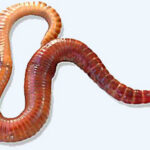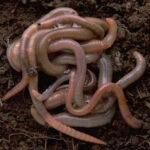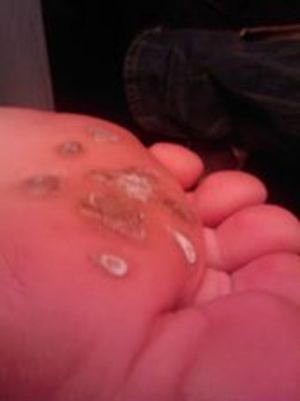Vermicomposting is becoming more and more popular. With more people allowing worms into their garages, their backyards, and their homes, to eat their garbage, there are now ready-made stackable worm bins on the market. But, if you don’t have over $100 to invest into a worm bin, a stackable bin made from buckets can easily be made for under $20 (or even for free!)
First off, it is important to note that you should make your worm bin before your worms arrive. Whether you order your red wrigglers, red wigglers, or red worms over the internet to be sent in the mail, or you are planning on picking them up from a local source, you will want to have your worm bin prepared before your worms get to you, so that they can immediately go into their new home.
A stackable worm bin can be made with a series of buckets, or a series of Sterlite or Rubbermaid containers, however, you can also keep your worms in a series of 3 gallon and 5 gallon buckets. You can purchase buckets of this size at any home improvement store, such as The Home Depot or Lowe’s, as well as in the paint department at Wal-mart, usually for about $5 each. You will need at least two, to begin with, but will only need one lid. Even cheaper, many grocery store bakery departments receive pre-made frosting in 3 gallon and 5 gallon buckets, and they usually happily give them away if you ask. Hardees and Burger King will also gladly give away their 5 gallon pickle buckets. Or, you can check at a construction site for buckets that previously held paint or grout. (If the buckets held paint, you will want to wash them thoroughly. If they held grout, the grout will actually help the worms digest, and you can let them consume it directly from the side walls of the bucket.)
Take one bucket and drill several holes about 1 ½ to 2 inches from the bottom, for aeration. This bucket will remain on the bottom, and will serve as a collector bucket for the leachate, which is the liquid that the worms excrete. You can actually dilute this liquid and pour it onto your plants as a kind of “worm tea”, similar to “compost tea”.
Then, take the second and third buckets, and drill many holes, at least ¼ of an inch wide, all over the bottom of the bucket. Drill them about 1 ½ to 2 inches apart, all over the bucket. While this bucket is on top of the collector bucket, these holes will allow the liquid to drip to the bottom bucket. Drill holes across the top of the bucket, about 2 inches apart, to aid in aeration. You will also drill these same holes on a third bucket, and when the third bucket is placed on top of the second bucket, the worms will be able to crawl through these holes to the next bucket. You will not need the third bucket for quite some time, since the worms will need to eat and digest through everything in the first bucket before you want them to move, so you can wait to work on the third bucket until you are closer to that point, if you’d like.
Take the lid, and drill holes about 2 to 4 inches apart, all over the lid, to assist in aeration. Don’t worry, unless there is a problem with your worm bin, the worms will not escape through the lid.
Now, prepare your bin for your worms. Place the second bucket inside the third bucket, and fill it with the dampened bedding and a little bit of food. Let the food sit in the bin for a couple of days to get things started. When your worms arrive, you can put them right inside the bin and put on the lid. Leave an overhead light on for a few days after you introduce the worms to their new home, to “train” them to stay inside. Do not feed your worms until after they have consumed all of their initial amount of food, and feed them about ½ the amount that they weigh. (For instance, if you have one pound of worms, only feed them ½ a pound of food at a time.) Follow the usual protocol for worm bins regarding what to feed your worms.
When the worms have worked their way through all of the bedding and food in the current bucket, you can add the third bucket directly on top of the second bucket, and fill it with dampened bedding and food. I put in more food than bedding to the next bin, to encourage the worms to move upward. Give them some time to move into the new bucket, at least a few weeks, and then you can harvest the first bucket. If you don’t like handling the actual worms, you can wait longer, to ensure that there are very few worms left in the harvestable castings. Some people wait until they are ready to add a fourth bucket before harvesting the castings from the second bucket.
Regardless, when you are ready, remove the second bucket, put the third bucket on top of the collector bucket, and harvest the castings from the second bucket. If you want, you can sift the castings to remove any stray worms. Then, take your castings to your plants and watch them grow!




